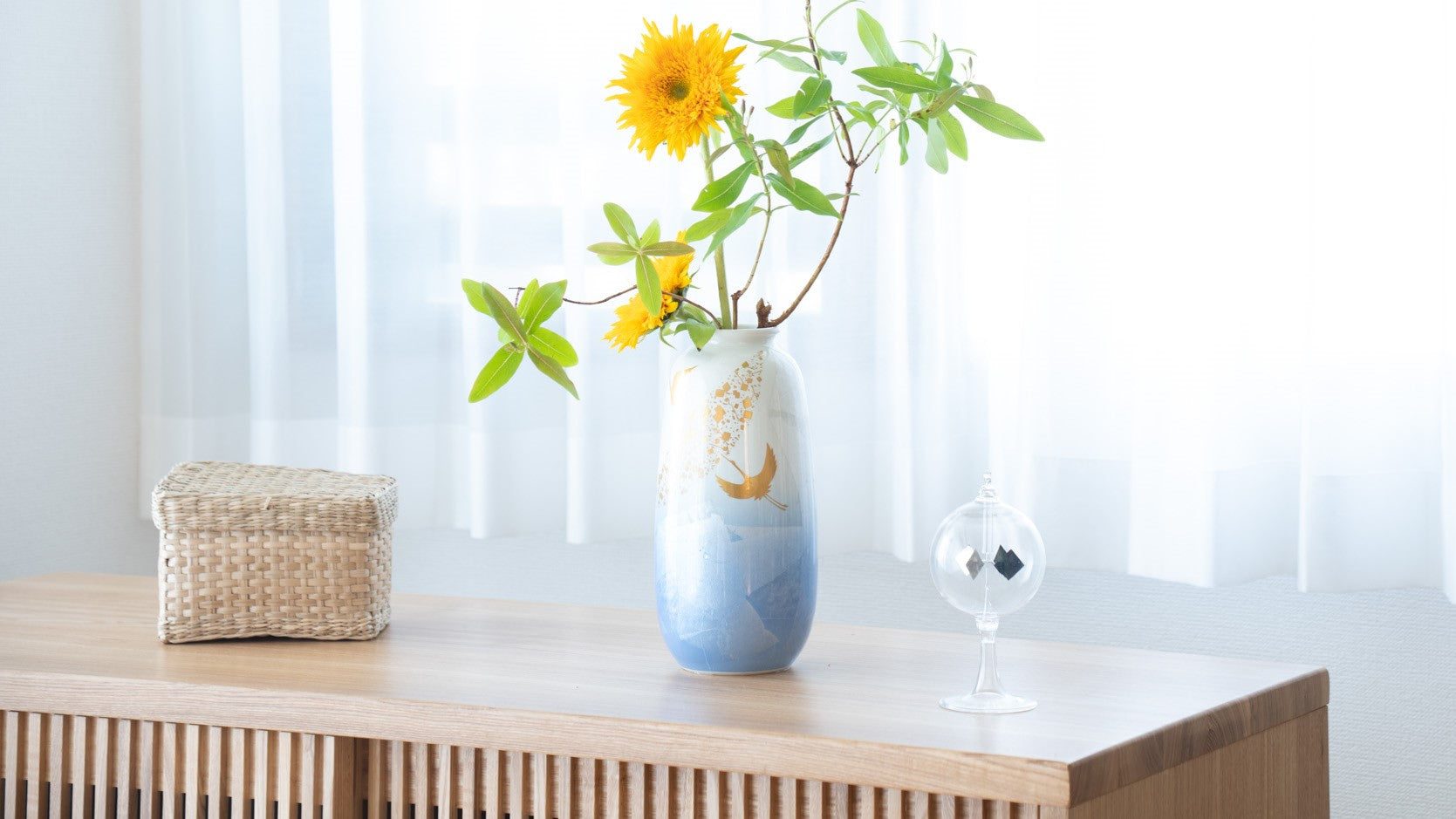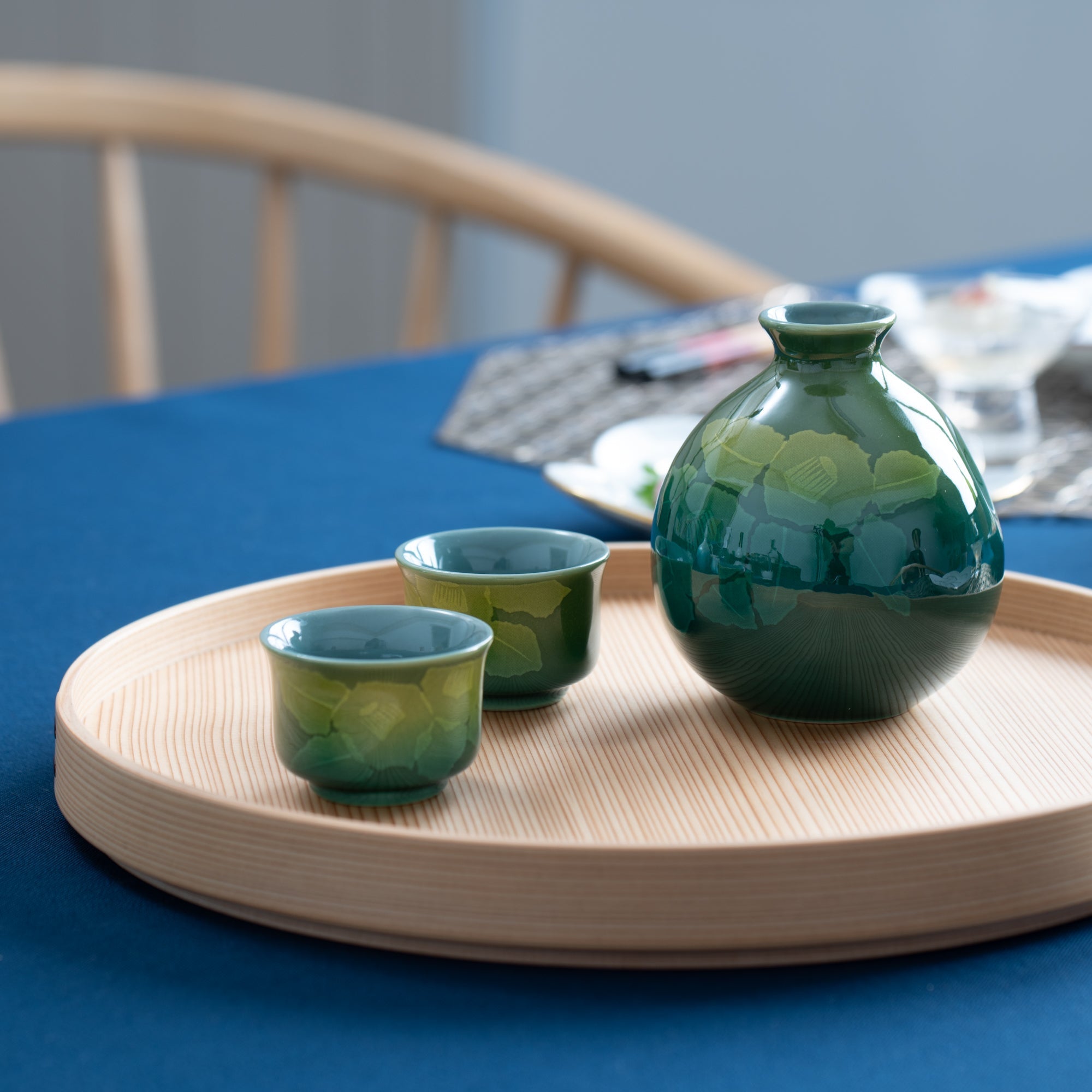
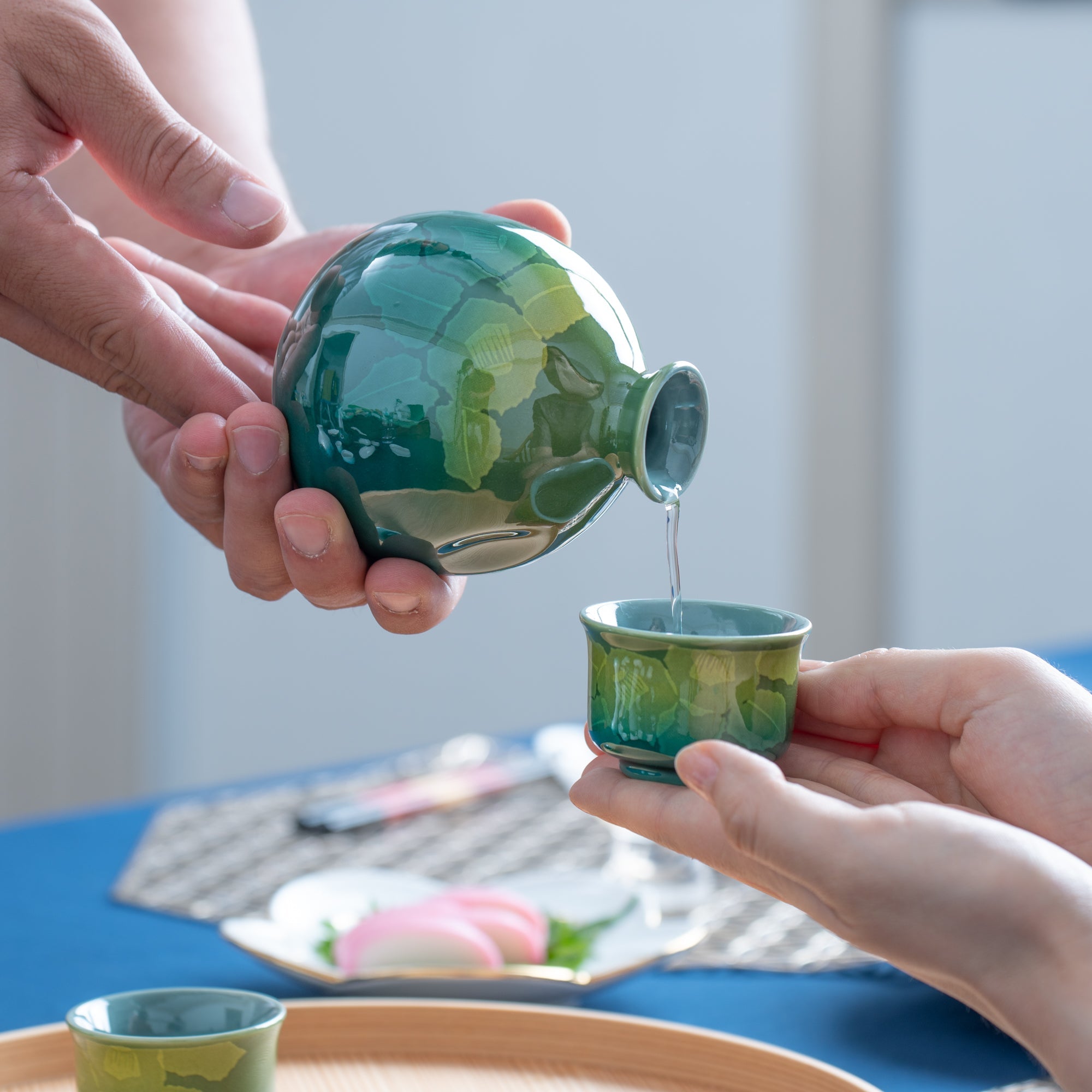
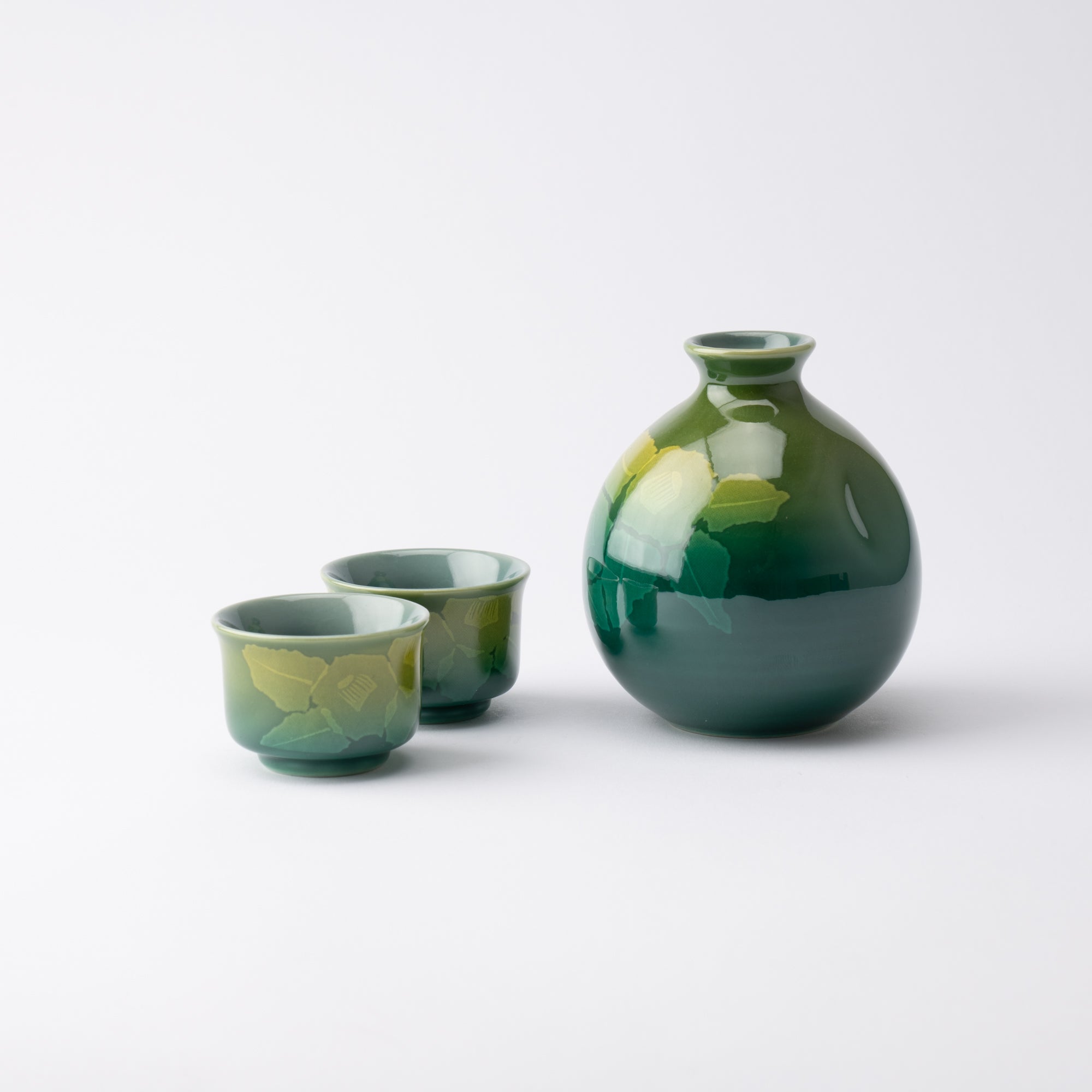
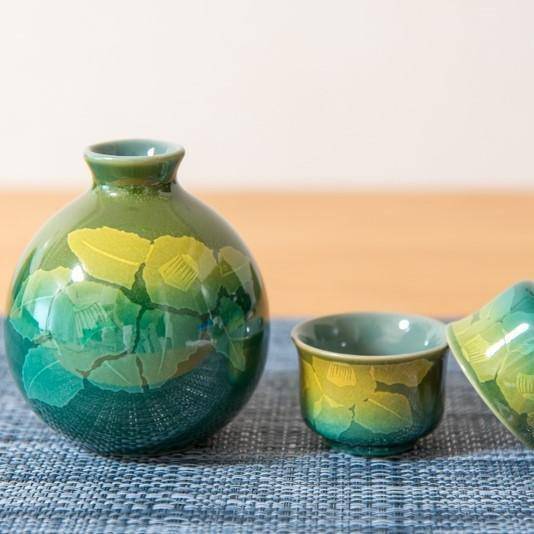
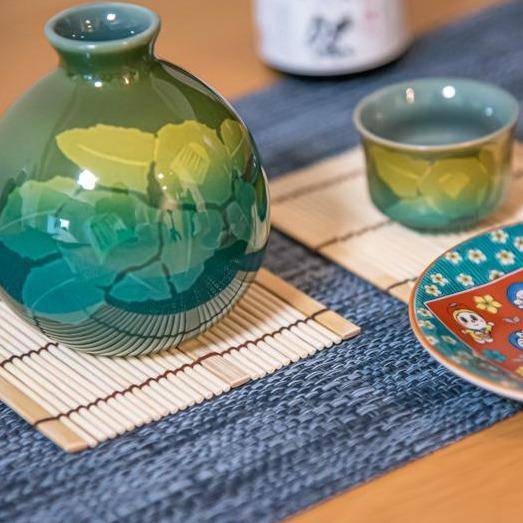
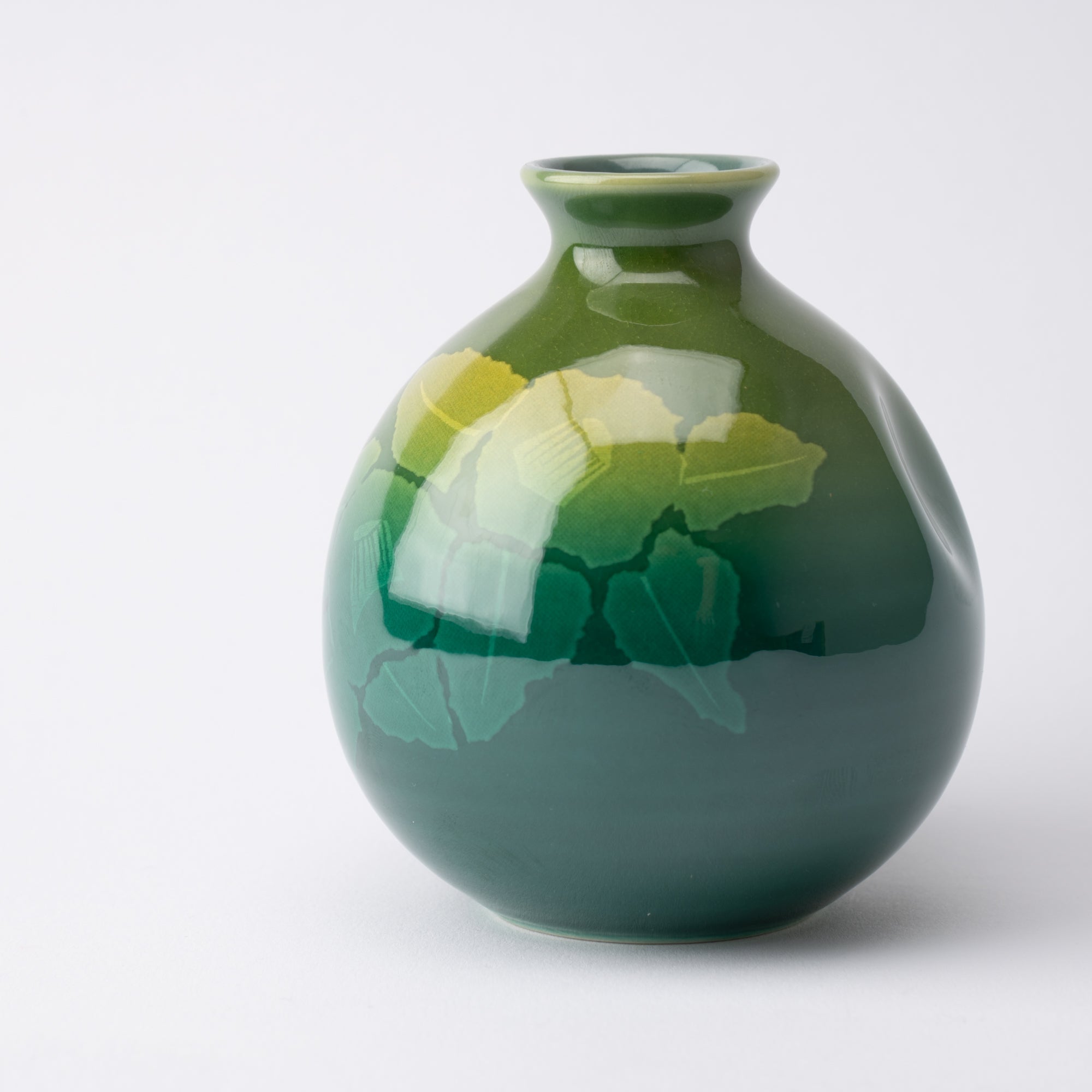
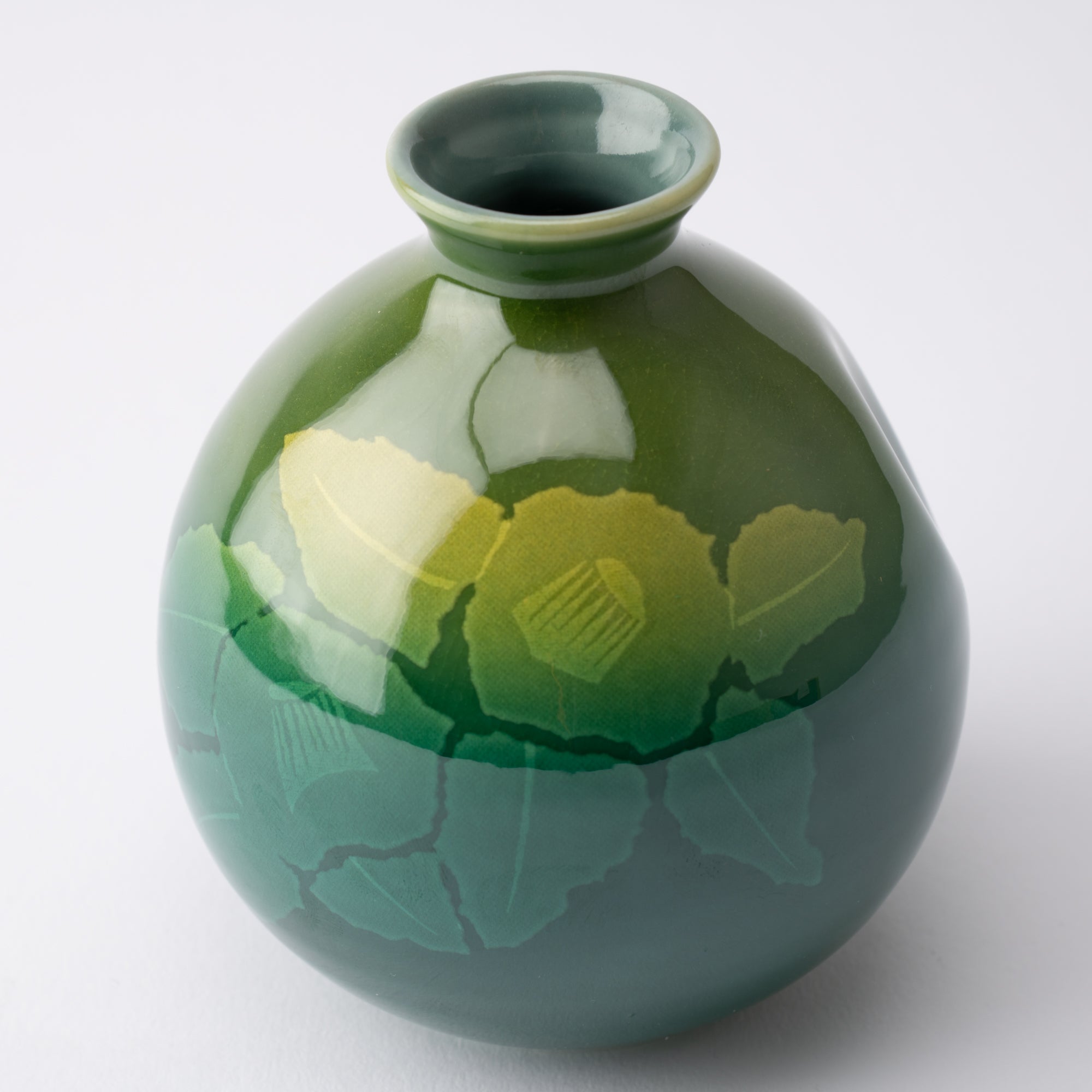
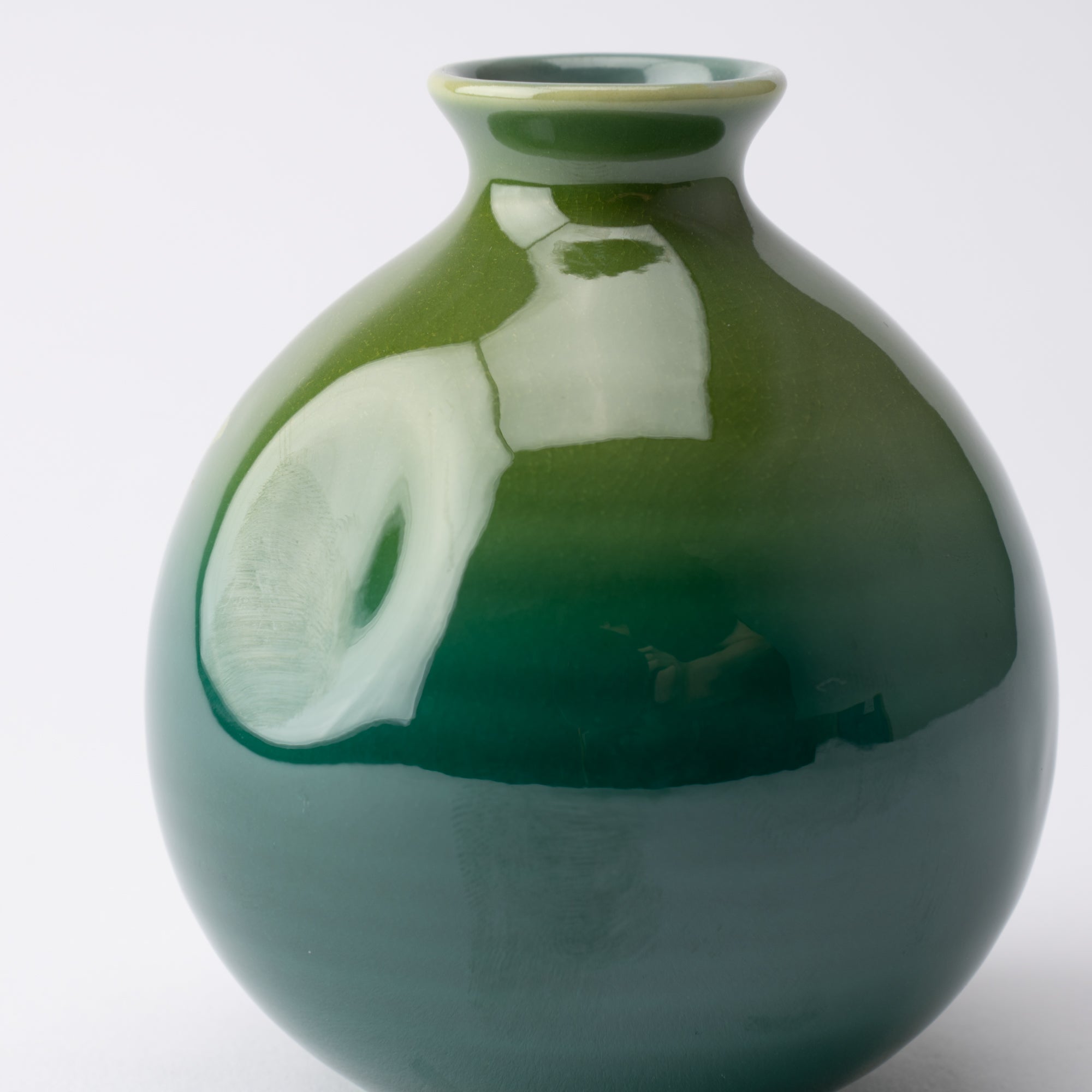
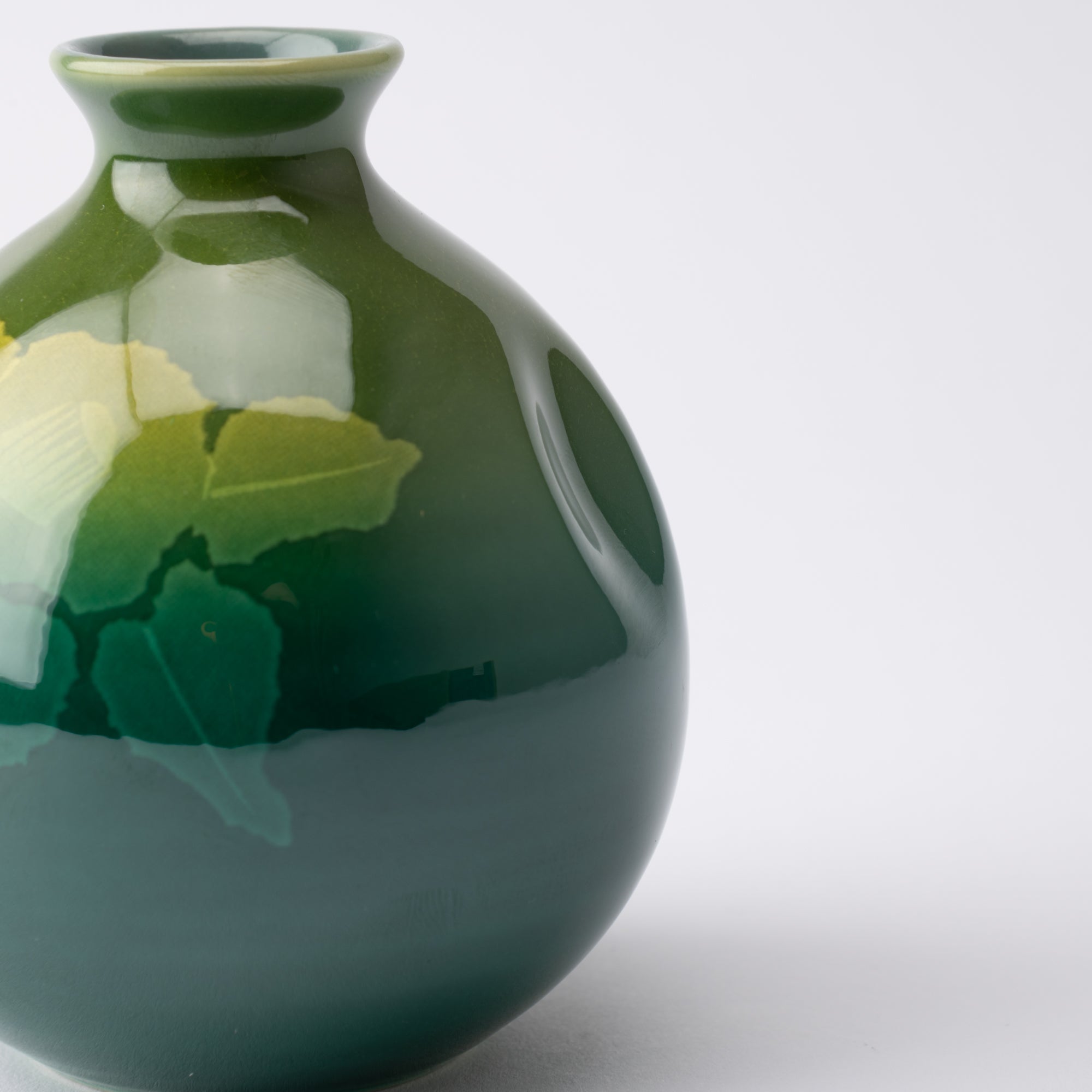
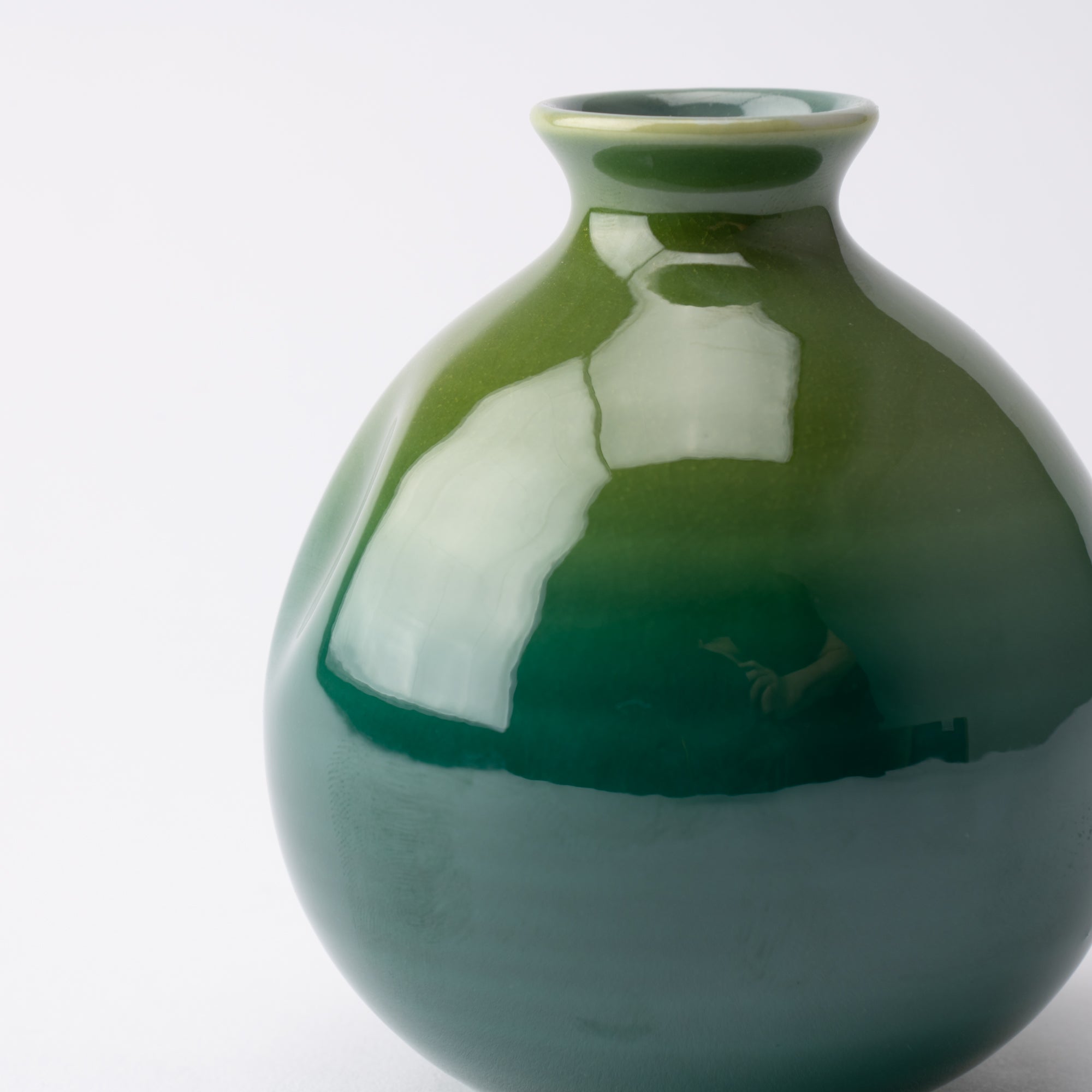
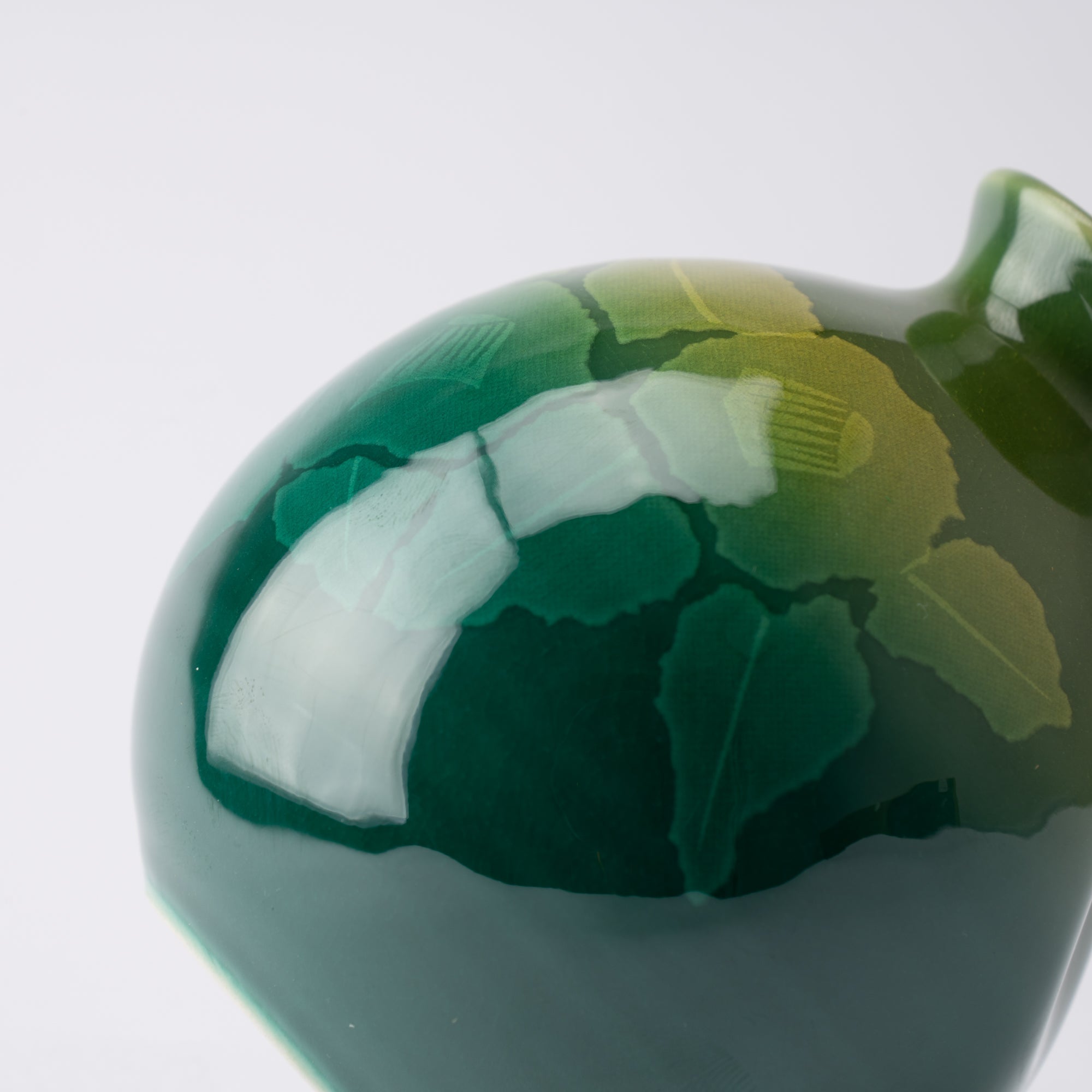
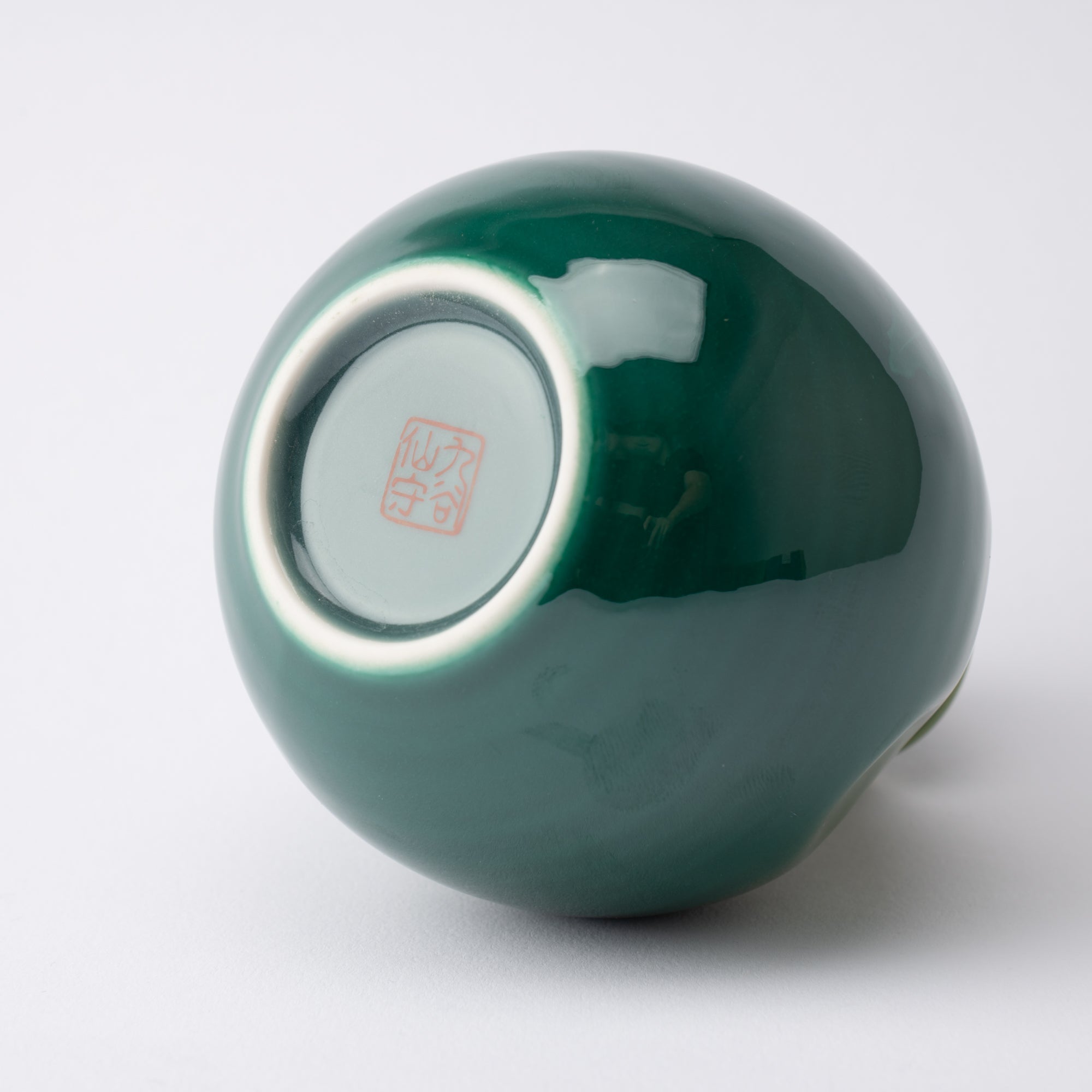
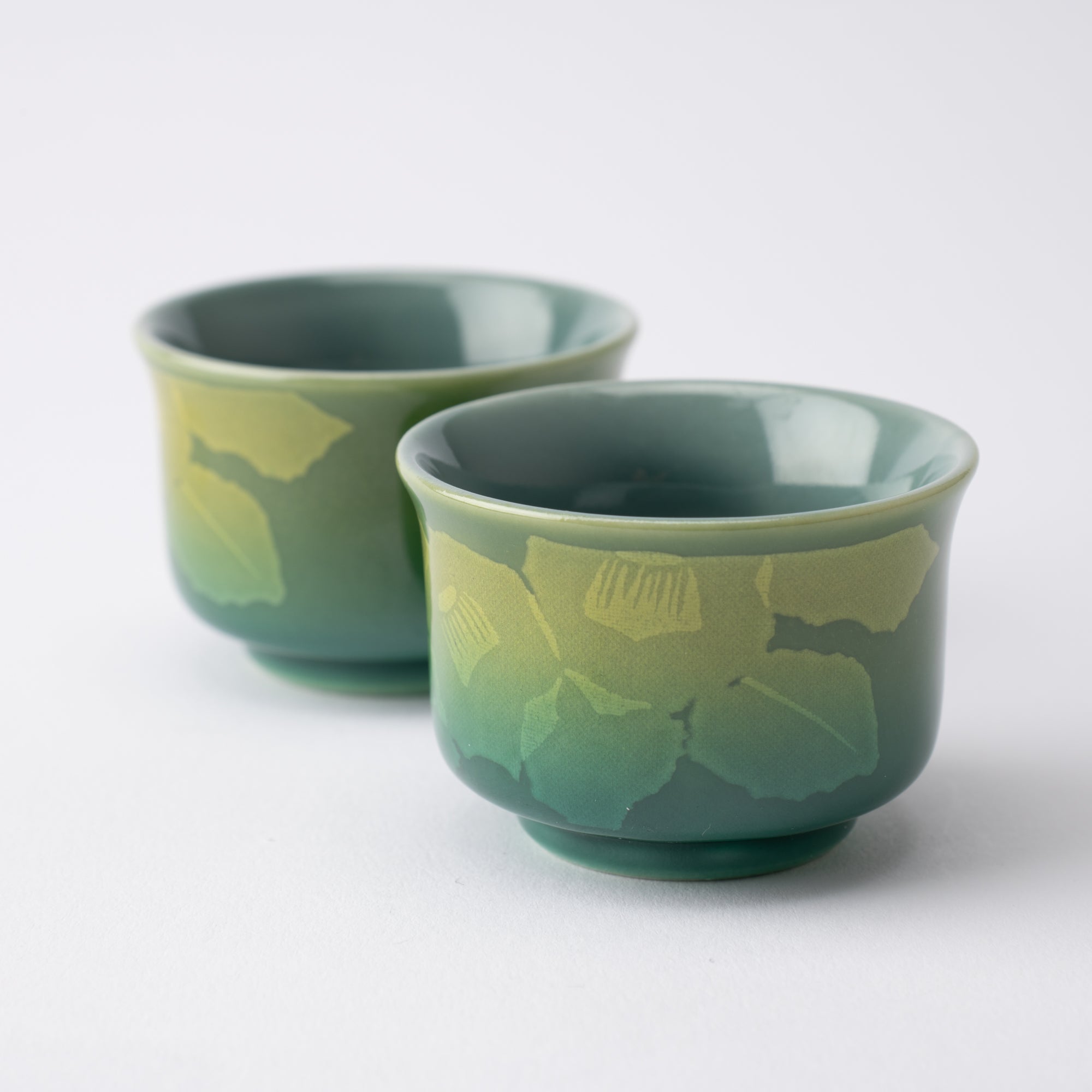
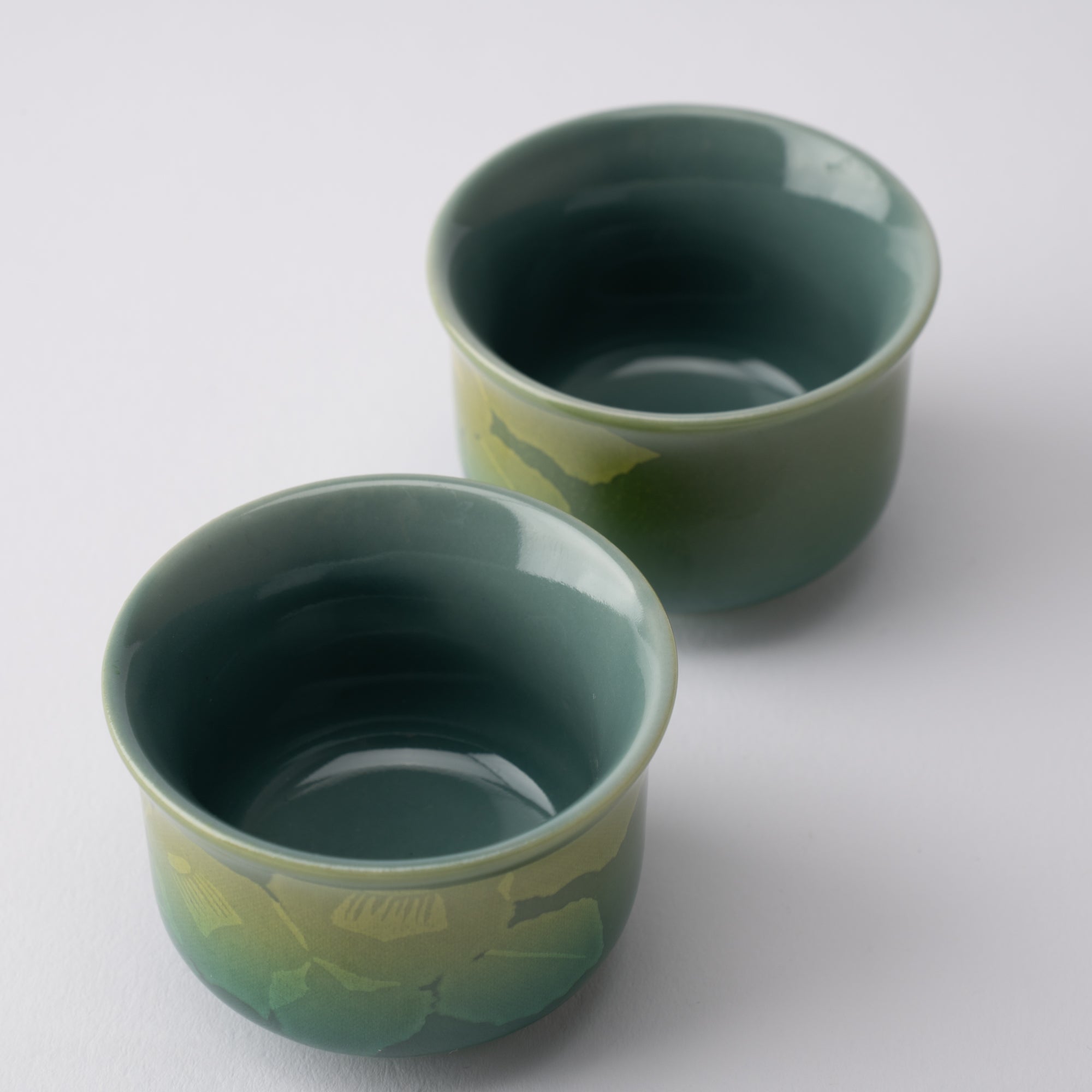
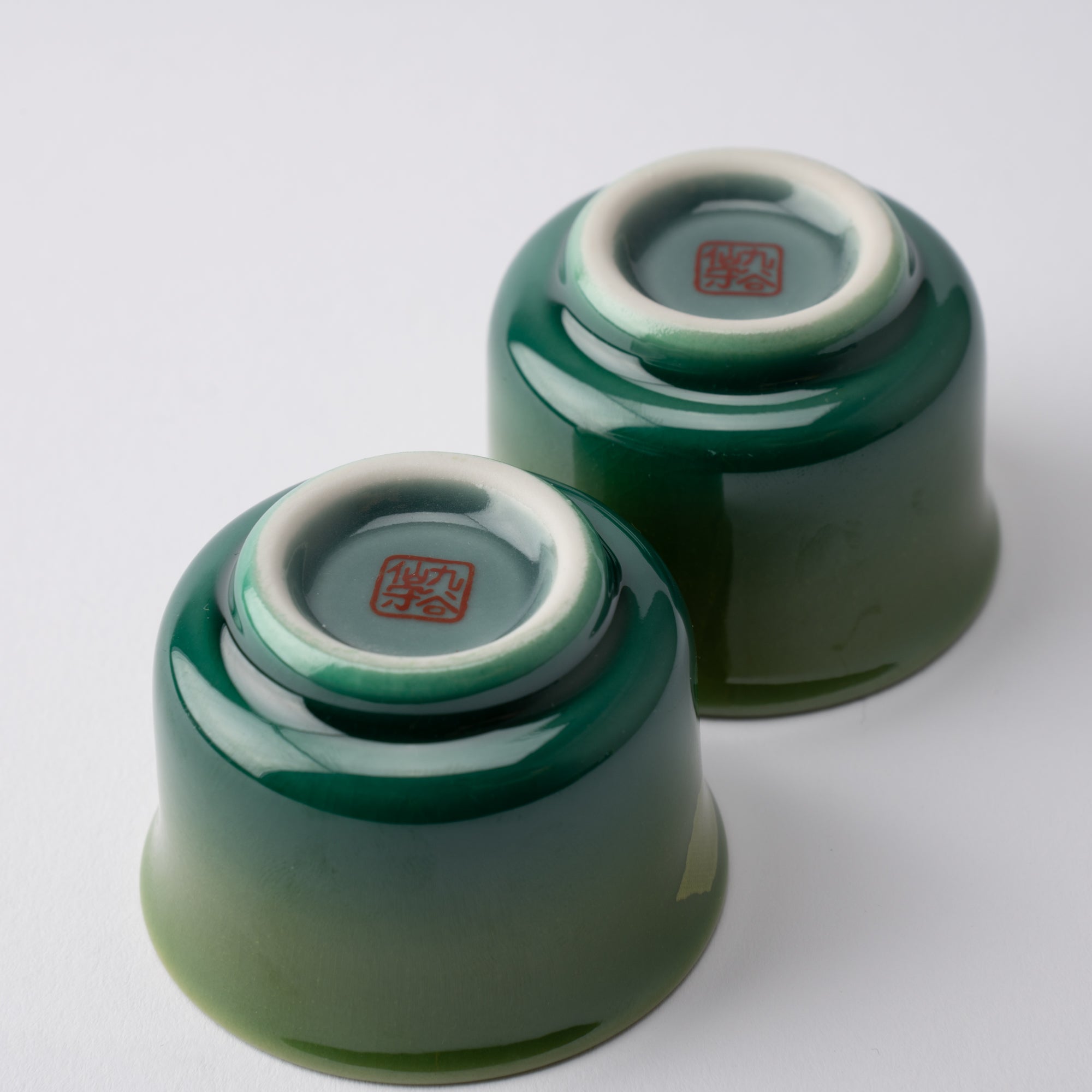
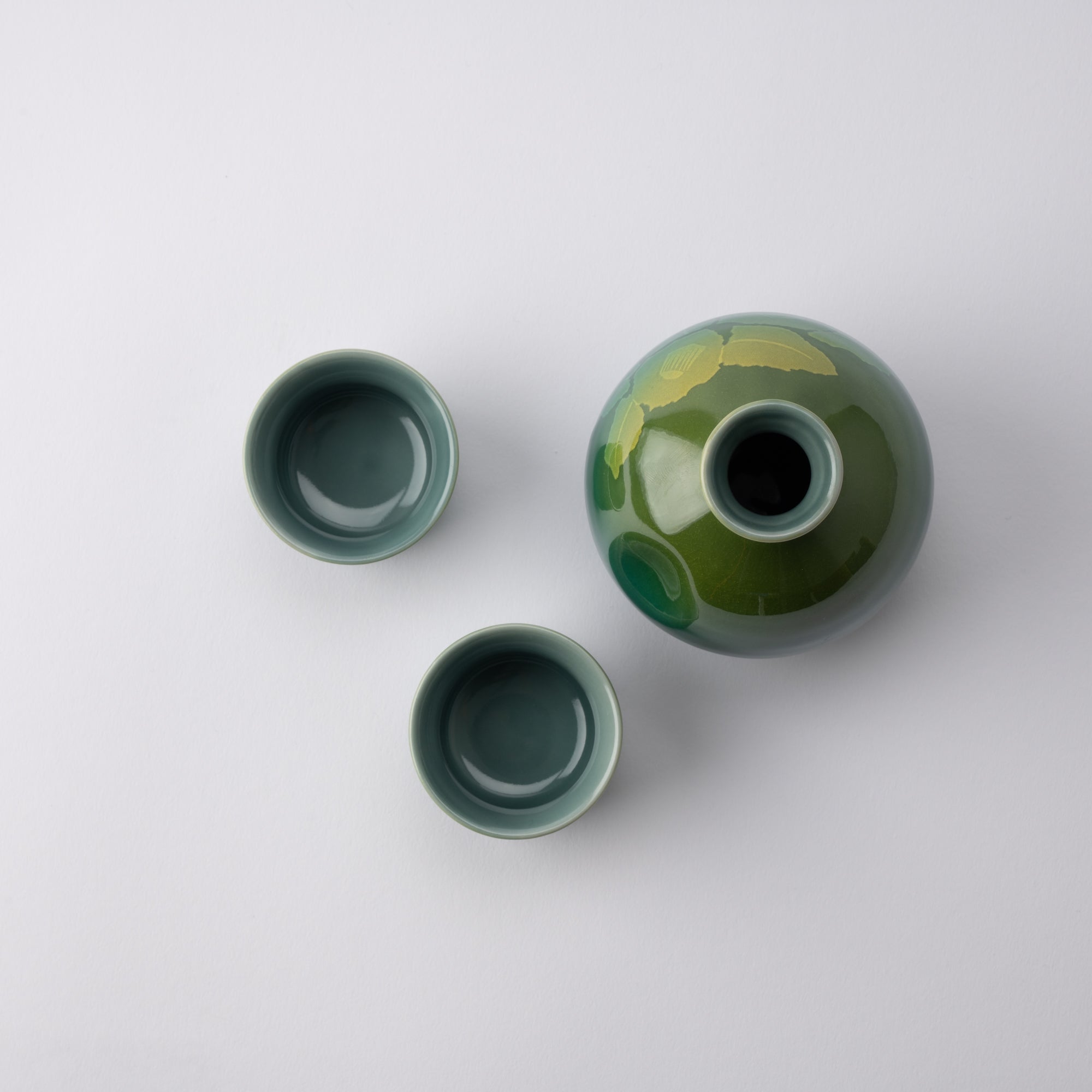
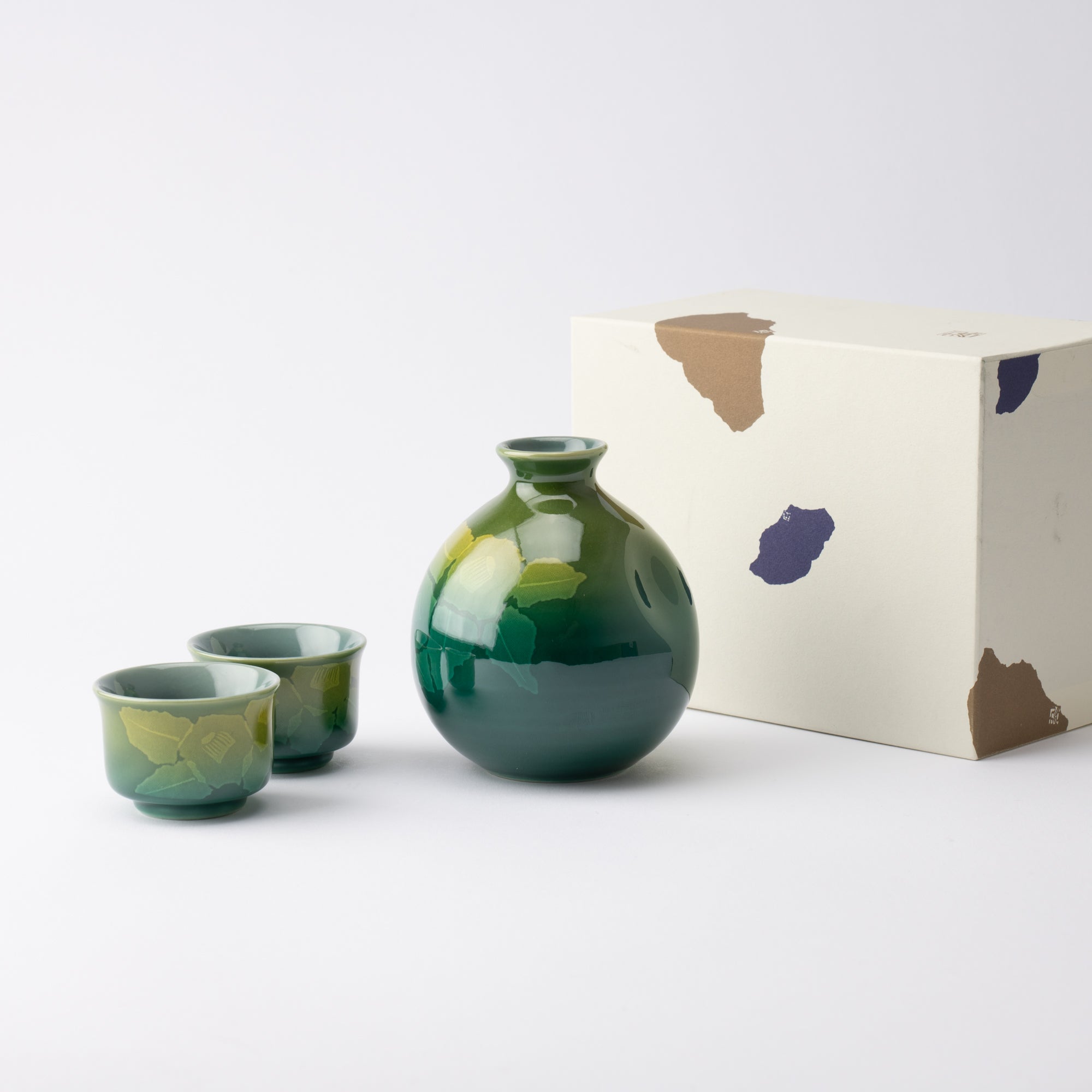
Ginsai Camellia Sake Set
Estimated Shipping Widget will be displayed here!
This is a beautiful sake set that includes one tokkuri (Japanese sake carafe) and two sake cups featuring camellia motifs beautifully appeared using the ginsai, the Kutani ware technique by which five-color glaze applied over silver foil.
This transparent and glossy glaze is complemented more beautifully by the gradient colors.
The smooth texture of porcelain feels relaxing and soft to your mouth, bringing out the rich yet delicate taste of sake.
It will infuse an elegant and sophisticated atmosphere into your dining table or home bar.
DETAILS
| Quantity | 1 sake carafe and 2 cups |
| Size | [Sake cup] D 5.7 cm (2.2 in) x H 4 cm (1.6 in) |
| Capacity | [Carafe] 350 ml (11.8 fl oz), [Cup] 40 ml (1.4 oz) |
| Material | Porcelain |
| Package Type | Paper box |
| Microwave | No |
| Dishwasher | No |
Crafts
Kutani ware is a pottery produced in the Kaga region of Ishikawa Prefecture, with a history spanning over 350 years. It is characterized by the heavy brilliance of the five colors of navy blue, red, purple, green, and yellow that are applied to the bold and daring lines. Its long history has evolved through the tireless efforts and enthusiasm of people who have sought innovation while maintaining tradition.
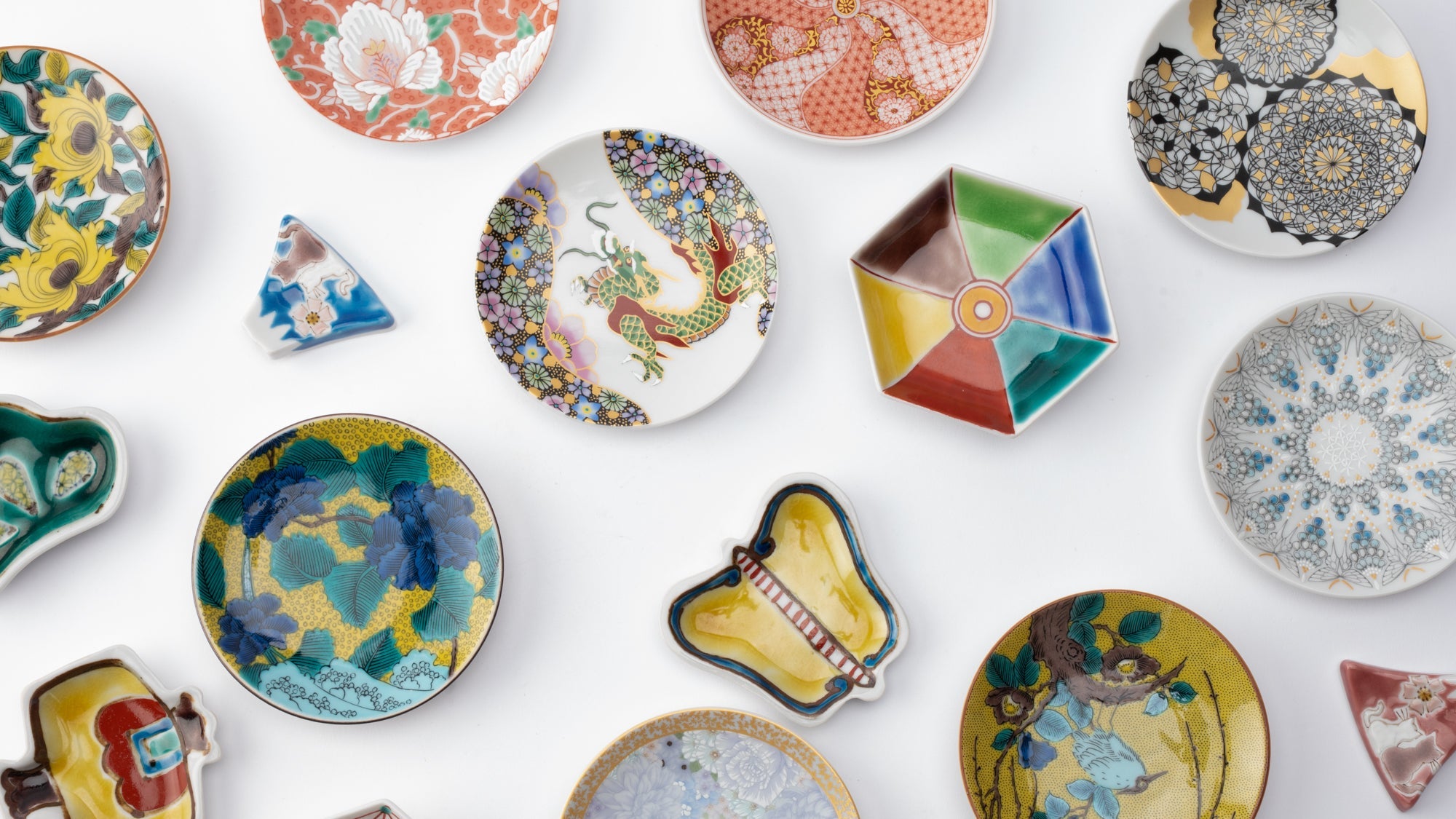
Choose options

















Sake Sets
Sake reveals different expressions through warmth, air, and the vessel that holds it. When preparing to enjoy fine sake, start by choosing the right sake set, thoughtfully designed to bring harmony to both taste and atmosphere.
Crafted by Japanese artisans, these coordinated pieces bring together balance, texture, and beauty in every pour. A well-matched sake set turns the simple act of serving into a quiet ritual, deepening your appreciation with every sip. Explore our collection to find the set that perfectly complements your way of savoring sake.
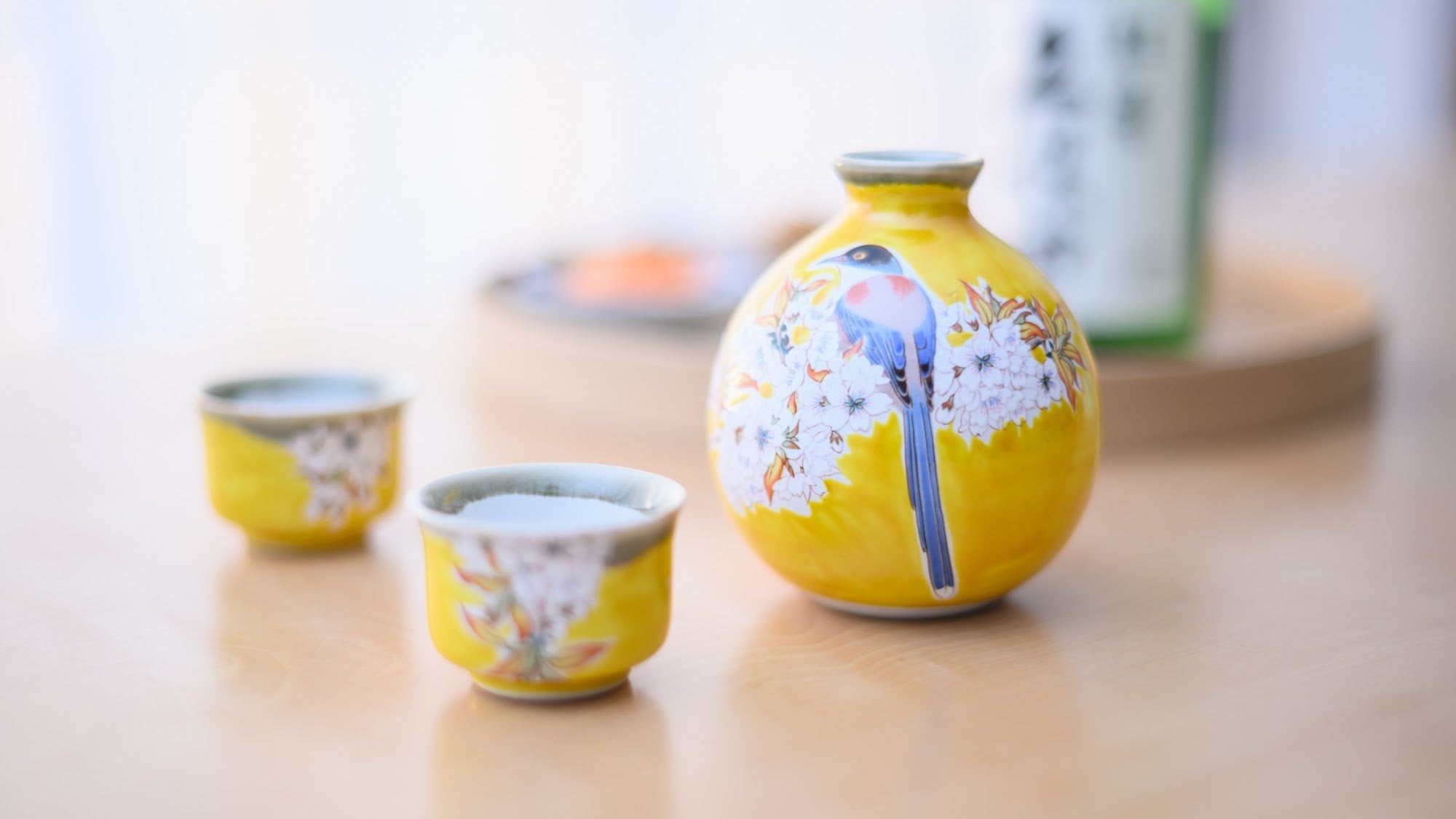
Ginsai
Ginsai refers to techniques used to apply silver leaf or silver paint to ceramics. Both terms also refer to the works produced by these techniques. Silver leaf or paint is applied over the ceramics’ glaze or overglaze decoration and then fired at a lower temperature than the overglaze itself.
Silver slowly oxidizes if left in contact with air, resulting in elegantly subdued tones. In contrast with gold’s dazzling presence, gleaming silver exhibits graceful beauty.
